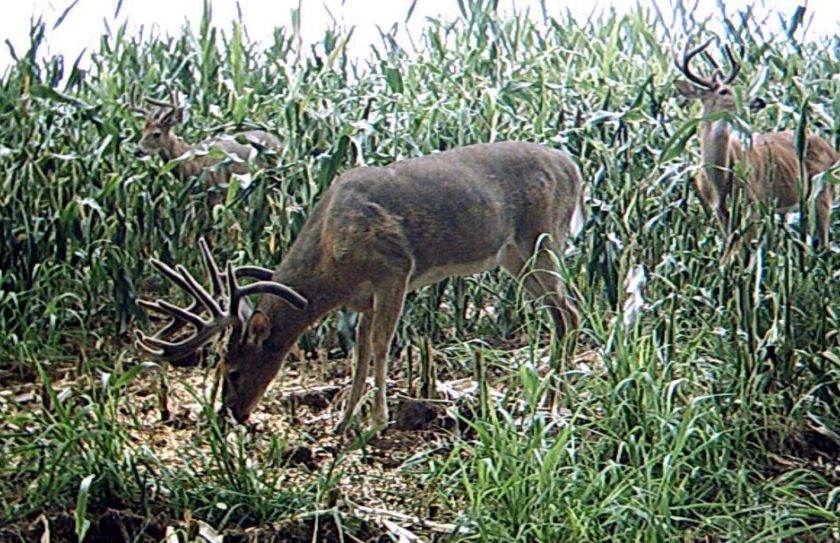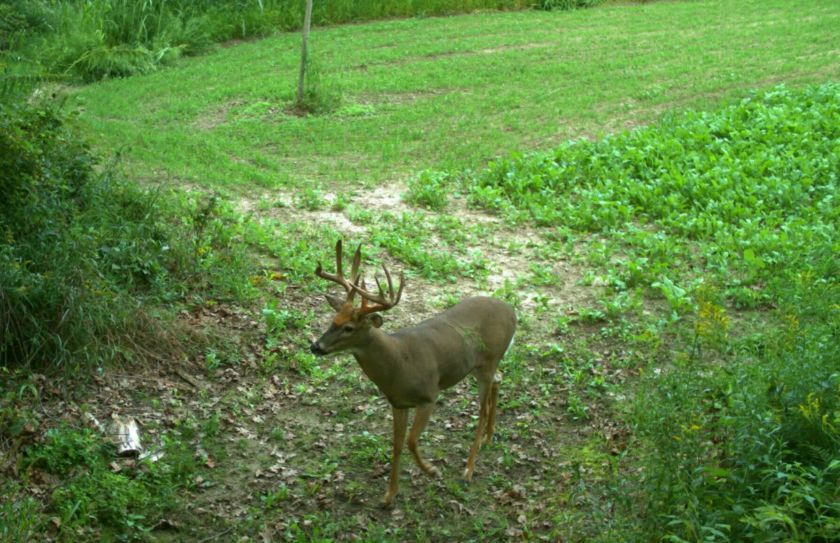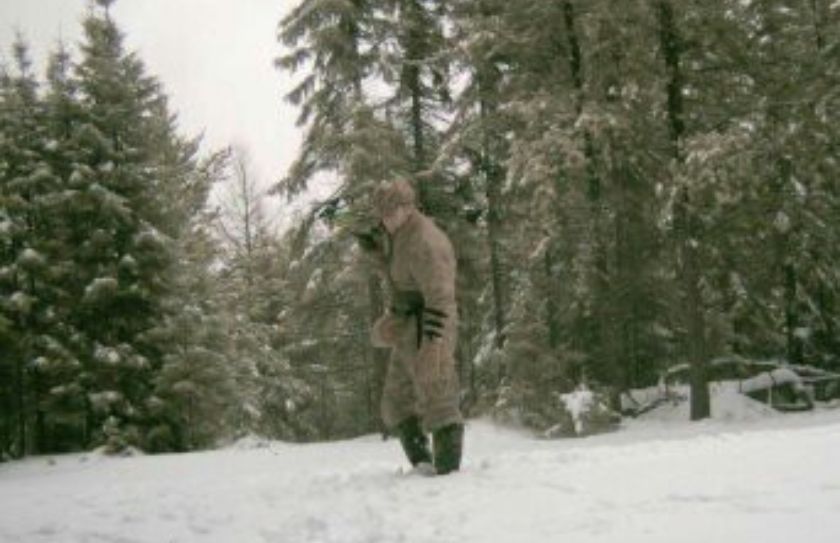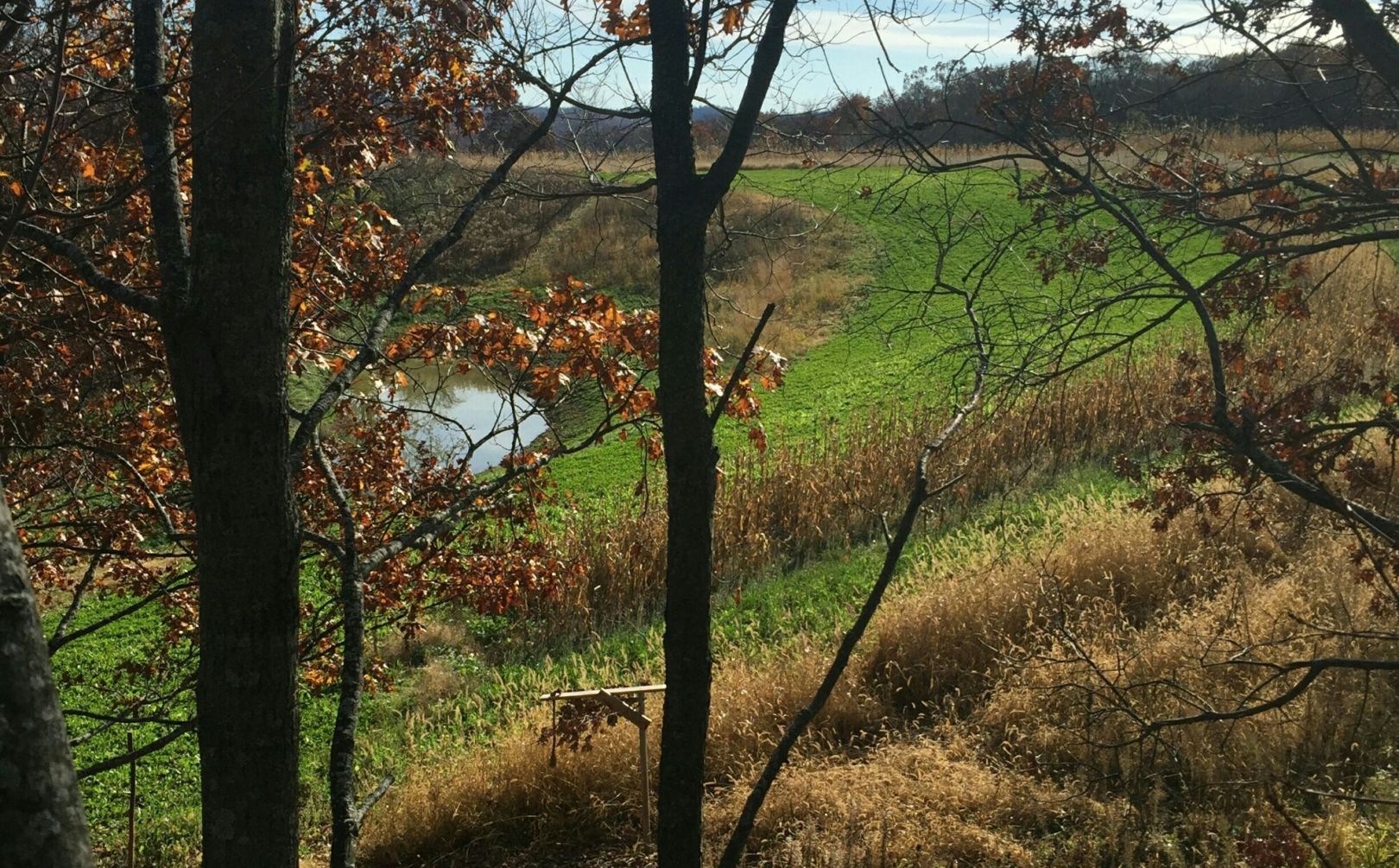
Are your whitetail habitat strategies more designed for bowhunting or gun hunting? My favorite small parcel deer improvements are largely, bowhunting habitat strategies. The average whitetail parcel size of the client's land I visit falls somewhere in the range of 80-100 acres. However, since 2005, I have scouted over 200 "micro-parcels" habitats for clients, from 8 to 40 acres. One of the strategies that I feel is critical for a small parcel is to develop a design that allows those acres to appear much larger than they actually are, which greatly helps create bowhunting opportunities. A 20 acre parcel can feel like 40 acres, by creating multiple layers of diverse habitat improvements. Also, long linear food plot creations can maximizing the efficiency of the overall % of acres working to house, move and feed deer; in particular by your tree stand.
In the video below, you'll see how we created a system of habitat improvements designed to bow hunt mature bucks!
Are your habitat strategies pointing the right way?
At the end of the day, using as much diversity that can be sandwiched into a small package of complimentary improvements, is an outstanding strategy to employ for creating potential bowhunting opportunities. But there is another important piece of the puzzle for an effective plan, that makes sure that your habitat strategies are easy for bowhunting: Your habitat strategies have to create travel to your stand locations, and not away from them.
In 2010 I had the privilege of visiting an outstanding Midwest deer parcel. Fields of native grass, food plots, and high quality bedding areas filled the parcel but as the visit turned towards the North border the landowner's mood suddenly shifted from pride and excitement, to frustrion. A neighbor's bowstand could easily be seen within 30 yards of my client's fenceline, and he was clearly taking advantage of a well-worn deer trail that headed directly to him.
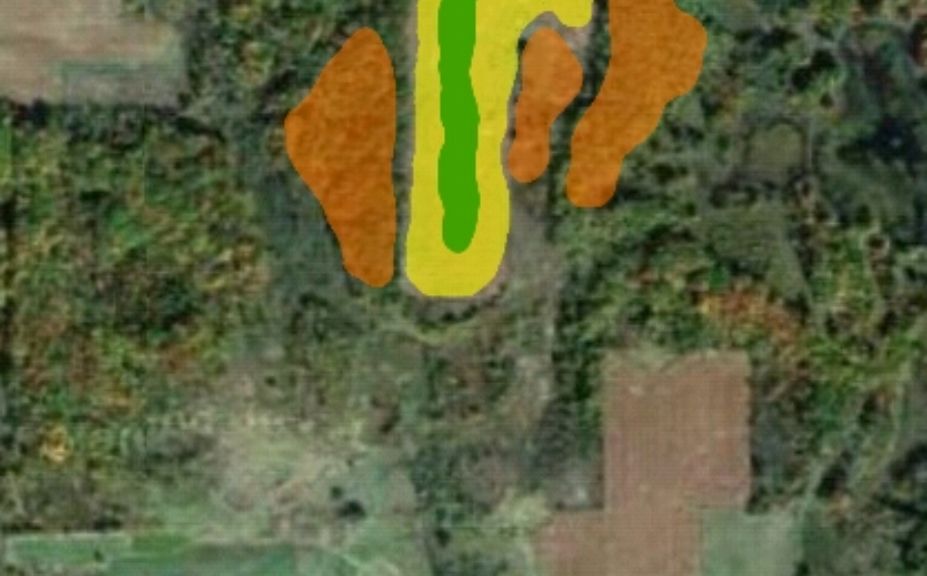
*Great bedding areas (orange), native grasses (yellow) and a high quality food plot (green) all combine to create a hotspot of deer movement! The only problem, the most central and important source of attraction is pointed directly at the neighbor's stand. When deer exit from the bedding areas on either side of the food plot, they have a 50% chance they will feed in the wrong direction, placing them directly under the neighbor's bowstand location that is positioned within a quality funnel of deer movement.
Depending on the State I visit, fencesitting is sometimes common, and other times it is completely despised of in favor of a more neighborly unwritten buffer. But sometimes you have to consider, "are the improvements that I am working so hard to intsall, re-inforcing my own stand locations or my neighbors?" There are 3 basic practices that I would like you to make sure are included in your own whitetail designs so that you not only keep the deer moving towards your own stand locations, but within bowrange as well!
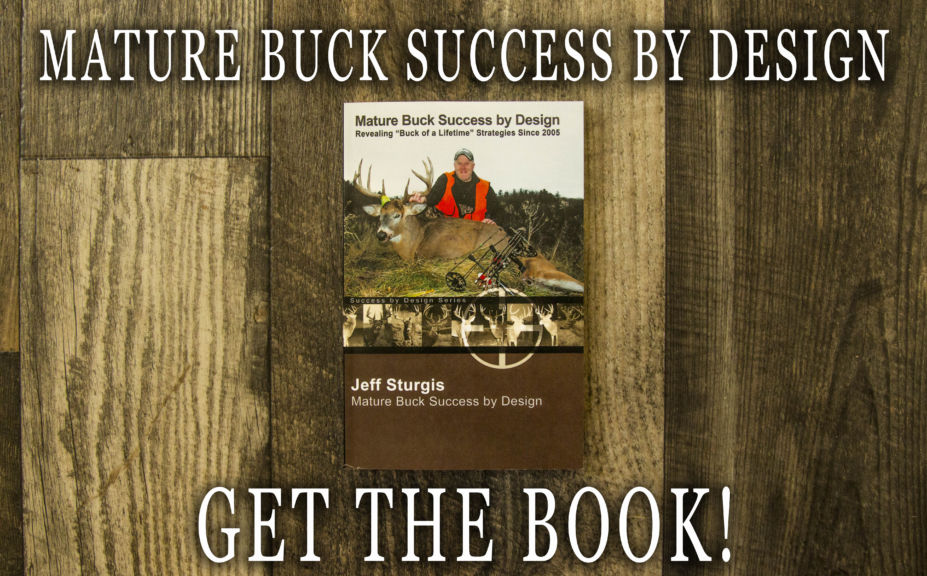
*Don't forget to check out my trilogy of Advanced Whitetail Hunting and Habitat Strategy books, including my latest book,"Mature Buck Success by Design".
1. Long and Narrow Food Plots
Food plots, in particular have the ability to offer a high source of attraction. Often, food plots become over-hunted and begin to establish a reputation by the local deer herd that encourages them to only appear under the cover of darkness. But even if the deer only appear after dark, they still appear. If you establish a quality food plot that offers a consistent food source throughout the bowhunting season, the fact that deer will eventually arrive is a given. However, managing that attraction is the most difficult part of food plotting.
One of the most important aspects of managing the attraction of your plot is reflective of the overall shape and size of the plot that you install. Plots that are round, square, large and open can be a great attraction but typically that attraction can come from anywhere surrounding the food source that bedding cover is present. However, when you take that same amount of food plot space, narrow it down and then lengthen it you can create both a highly defined attraction and definition of movement. When a deer approaches to feed on a food plot that is long and narrow they have a choice of moving right, or left. At times a deer will feed down and back, but often instead deer will exit or enter the end of the plot while traveling to or from a high quality bedding area, a larger food source, or even a deer travel corridor.
When you "aim" your food plot towards another high quality attraction of food, cover or travel the deer will follow the line of deer movement that you have defined. The more that you define movement, the easier it is to choose a stand location, as well as how you as a bowhunter will access that stand location without spooking deer.
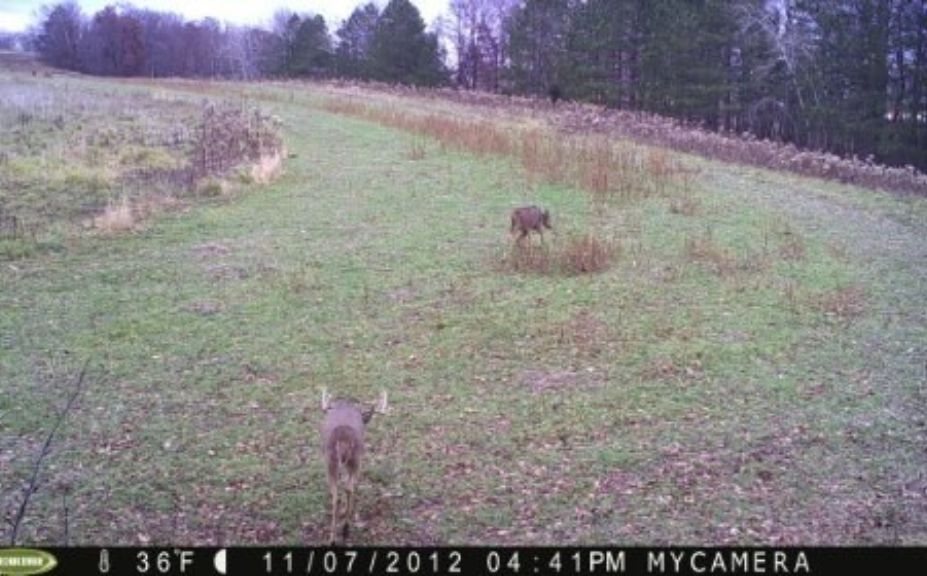
*By using long, narrow food plots you can offer a very high definition of travel. The more narrow and less open aspect of the plot will also help you to hide deer from your movements while hunting, as well as to give mature bucks a greater sense of security while traveling during the hours of daylight.
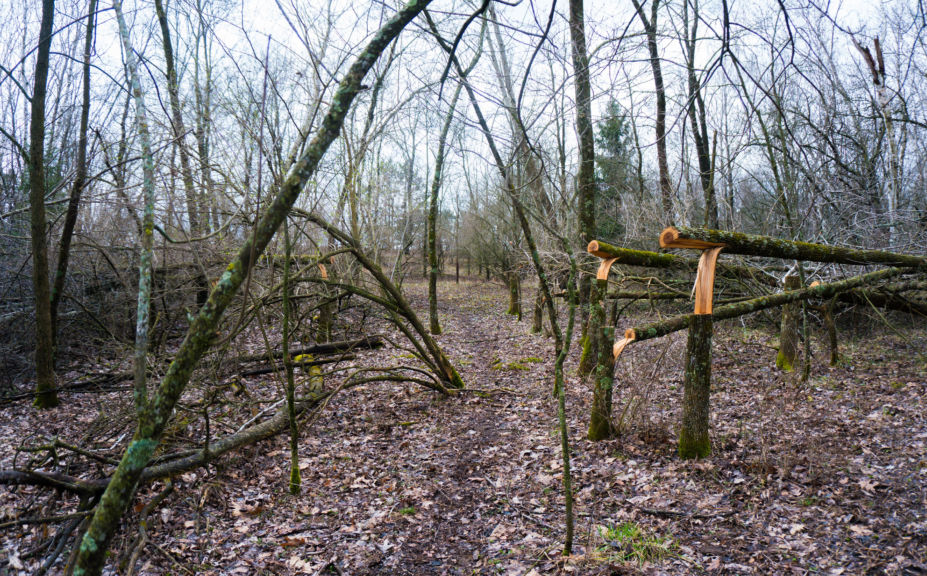
2. Definition by Corridor
It is hard to find a greater habitat improvement for defining deer movement for the bowhunter than a chain-sawed travel corridor! I like to use the saw to form a gentle encouragement, by creating waste-high hinge cuts of small to medium diameter trees perpendicular to the deer trail. By "gentle" I mean subtle and porous, so that a deer can escape through either side if needed, without having to crash through a cattle shoot of logs and debris. If you really want to take your corridor to the next level, a DR brush trimmer can be used to keep the corridor clean, and herbicide can be applied to make sure that the deer trail is firm, clean, and highly recognizable to the local deer herd.
After your corridor is defined, created, and cleared the addition of a stand location is the last step towards taking advantage of a highly defined deer movement. Corridors of 100 yards or more can become some of the most securely used deer trails on your property and if you use them to connect your own food plots to your own bedding areas, they can offer some of the most defined stand locations to kill a deer from on your own property! Here is a great article that expands on Whitetail Travel Corridor Creations.
* Hinging trees away from the deer trail and clearing all logs, brush and debris along the corridor can define deer movement in a hurry, especially when it connects daytime bedding to food. The addition of a waterhole or mineral station (where legal) can greatly enhance the value of the movement.
3. Complimentary Bowhunting Habitat Strategies
Narrow food sources and chain-sawed travel corridors are great habitat features that you can create to help you narrow down a location to hang a bowstand. However, when you combine both techniques together to form long lines of deer movement, you can effectively build the potential for multiple stand locations on your own land, and not your neighbors. The resulting bowhunting habitat strategies will often flow parallel to your borders, instead of perpendicular, which greatly lowers the value of a neighbor's opportunistic stand location.
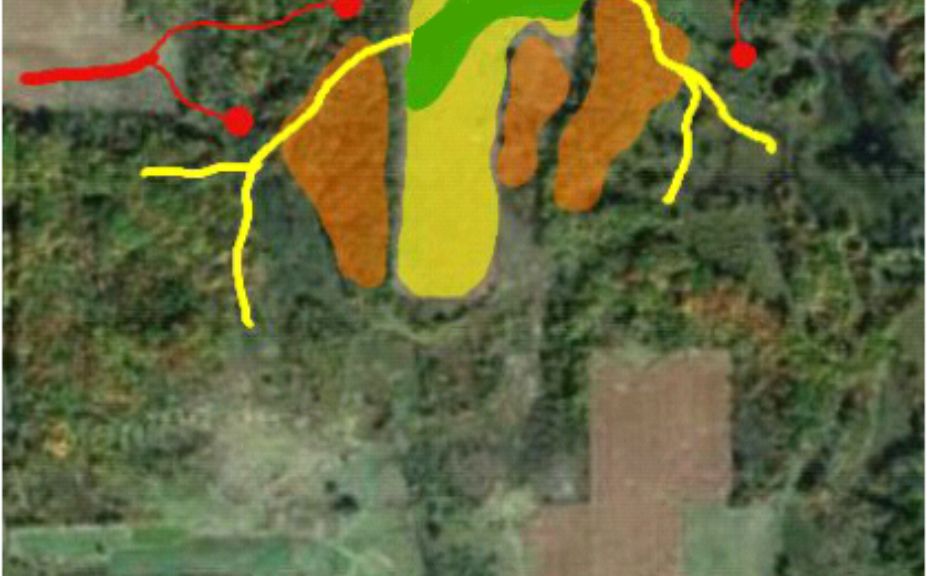
*A simple rotation of a long narrow food plot, along with the addition of chainsawed travel corridor (yellow) can effectively set the table for several stand locations (red) that can be used with a variety of wind directions, as well as both morning (away from food) and evening (closer to food) stand set-ups.
Complimentary stand locations are a great way to hunt a specific area on different winds or at different times of day. Here is a great video on understanding and creating complimentary stand locations.
A collection of improvements working together can create a complex, but highly defined level of diversity that gives your micro parcel the appearance of being "big". No improvement should be random on your parcel, but instead should work within a cohesive movement that facilitates movement across and within your entire parcel, and not off of your parcel. Not only should you be able to keep more deer on your own land, but directly under your own bowstand as well.
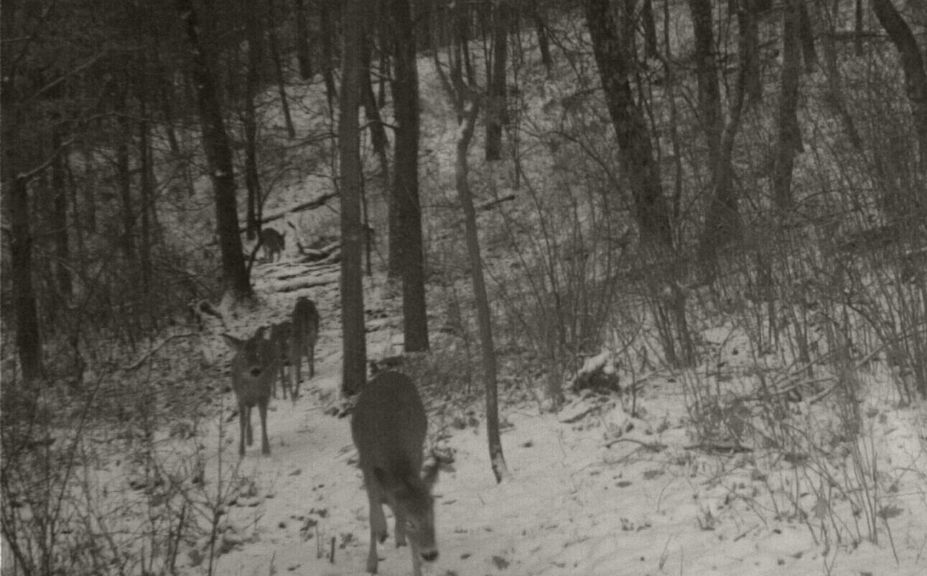
*The improvements that you create, should encourage deer to travel within your parcel borders, and not off of them. Are your food plots pointed in the right direction for easy bowhunting? To make sure that you are accomplishing less harm and more good, check out "Which Direction Do Your Food Plots Point?"
